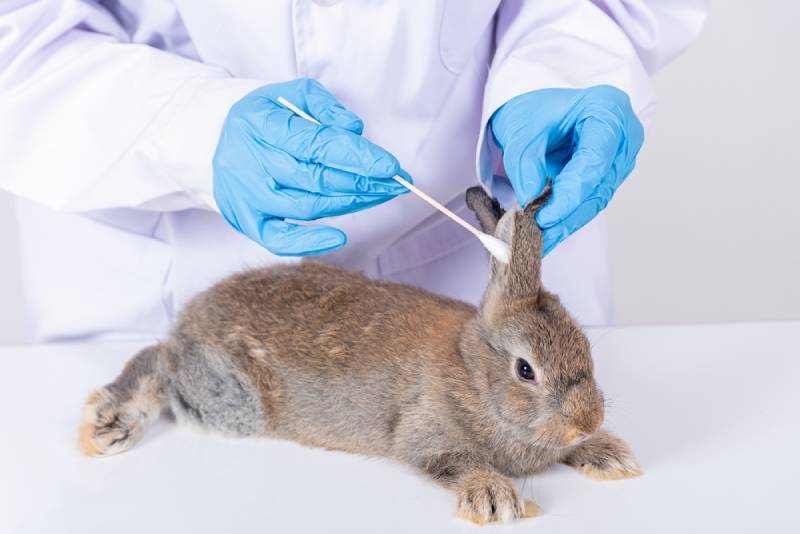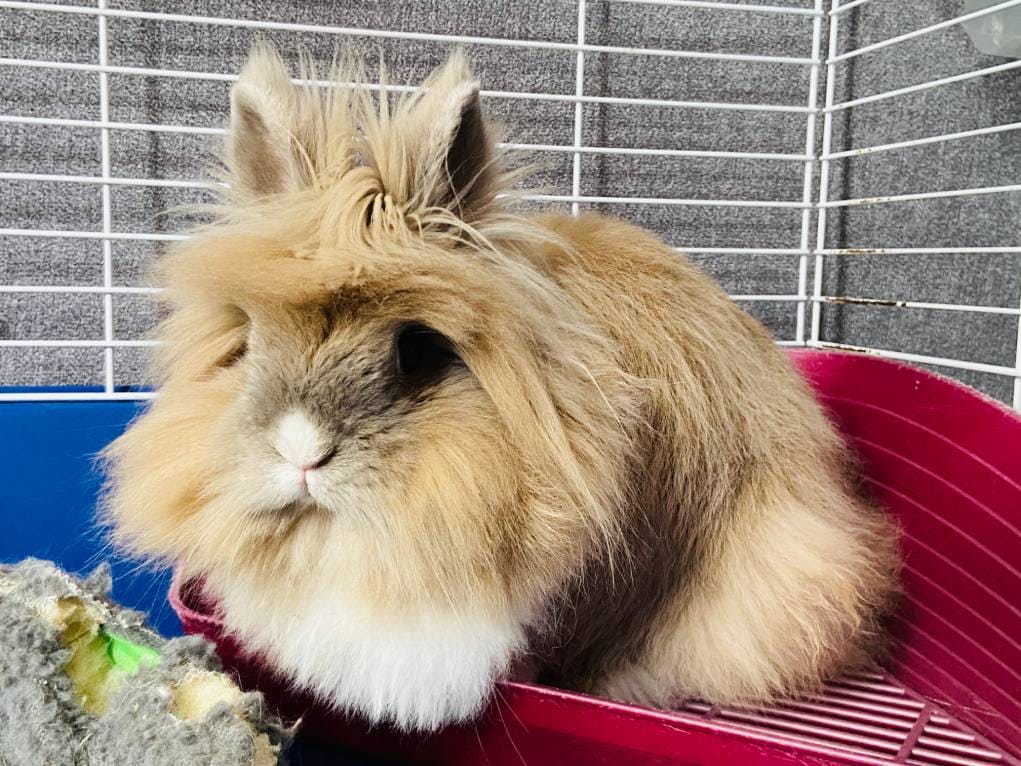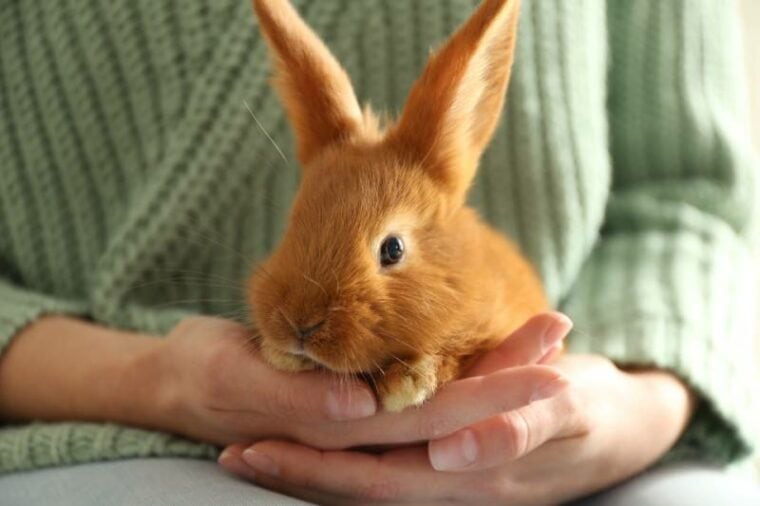
Rabbits are often very social and enjoy being pet, especially if they’ve been socialized since an early age. However, not all rabbits are that social, and some may be unsure of getting petted by those they don’t know.
Furthermore, every rabbit has their own preferences in where they like to be petted. Once you get to know your rabbit, you’ll learn about their personal preferences in where they like to be petted. With that said rabbits do tend to like specific spots petted, while disliking other ones.

First, Some Things to Know About Rabbits
Rabbits are quite peculiar creatures that are very sensitive and prone to stress. There are some things that they really dislike, such as being picked up. Rabbits are prey species, and they easily get startled. When it comes to picking them up, you should gradually and gently get them used to doing so from an early age. Some, or most, will still dislike it, but they may learn to tolerate it. This can be very important when you need to pick up your bunny to pop them in the carrier box and take them to the vet. It will also make it easier for the vet to examine your rabbit.
Holding rabbits should be done in a calm and gentle manner, but also while securely supporting their body and all four feet. Some rabbits dislike it so much that they may try to wiggle their way out and jump off, which can lead to disastrous injuries.
Kids and rabbits sounds like a great combo, and many parents want to get their child a bunny. But owning a rabbit is a tremendous responsibility and requires daily care and attention for as long as 8-10 years, depending on the rabbit’s breed and health. Children often lose interest quickly, so we would only recommend rabbits for adults and responsible older kids. Children should always be supervised around bunnies, as they may be too firm or rough without even realizing it, which may lead to serious injuries for them or the rabbit.
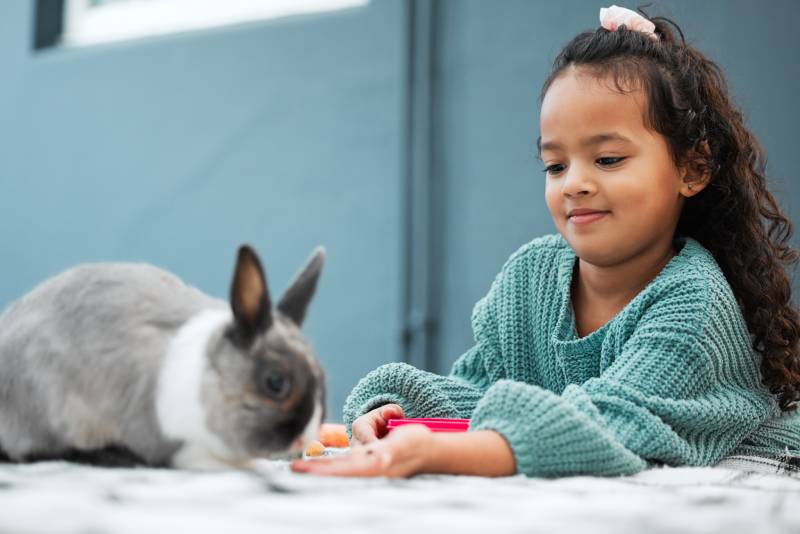
Now, let’s check out the 5 best places you can pet your rabbit.
The 5 Best Spots to Pet a Rabbit
1. Forehead
Most rabbits prefer to be petted on their forehead. Many rabbits will close their eyes and relax when they are petted on their forehead, which is a sign of their contentment. When approaching your bunny, make sure to do so slowly from the side, not directly in front of their face, as they have a blind spot there and will not see you coming. This may scare them. The same goes for approaching them from the back or above.
Of course, it’s important to be gentle with your rabbit’s forehead, as it can be more sensitive than other parts of their body. Use slow, gentle strokes and pay attention to your rabbit’s body language to make sure they are enjoying the attention, and give them enough space to back away if they’d like to.

2. Ears
Many rabbits like their ears to be rubbed or stroked gently. Their ears have many nerve endings and are quite sensitive. Therefore, petting them in this area can be pleasurable for many rabbits. Furthermore, some rabbits may have a hard time reaching their ears by themselves.
However, rabbits have very sensitive ears, and some are more sensitive about them being touched than others. Rabbits that have had poor past experiences may not like their ears to be rubbed at all, for instance. If your rabbit appears uncomfortable or avoids ear petting, it’s important to respect their boundaries and find other ways to interact with them.
Of course, you should be gentle when petting any rabbit’s ears. Don’t apply too much pressure. Use soft, circular motions with your fingers, and pay attention to your rabbit’s body language to make sure they are comfortable and relaxed. Never pinch your rabbit’s ears!
3. Cheeks
Many rabbits like their cheeks to be petted in particular. Their checks are often sensitive and contain scent glands, which they naturally like to rub on things. Therefore, they often enjoy having them rubbed by you. Their cheeks also contain many different nerve endings, making them more sensitive than other parts of their body. Stroking their cheeks is a good way to feel their mouth, in case there is any odor, discharge, or swelling on their jaws that needs veterinary attention.
You should always be slow and gentle when petting your rabbit’s cheeks. You never know when a rabbit may not like their cheeks touched, especially since rabbits may be sensitive about strangers coming near their faces. Always approach them slowly and gently.
Pay attention to your rabbit’s body language and be responsive to their cues, such as flinching or pulling away, as this may indicate that they are uncomfortable or not enjoying the experience.
Not all rabbits like to be petted on their cheeks, either. It’s important to watch your rabbit’s body language, as stated above, to ensure that they like their cheeks to be petted.
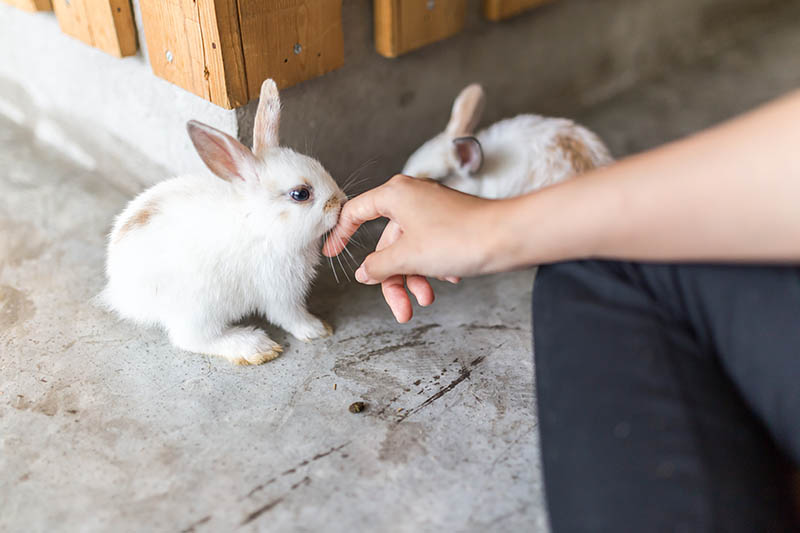
4. Back
A rabbit’s back is one of the most neutral places you can touch, making it a good option for rabbits that are unsure of their surroundings or whoever they’re interacting with. Many rabbits prefer to be petted on their backs first and then warm up to being petted somewhere else.
Of course, you should also be extremely gentle when petting their back, even though it is less sensitive than other parts of their body. It’s important to remember that not all rabbits enjoy being touched on their backs, particularly if they have had negative experiences with being picked up or restrained.
In addition, some rabbits may be more sensitive on their lower back near their tail, so it’s important to be particularly gentle or avoid this area altogether. If your rabbit seems uncomfortable or appears to be in pain, stop petting them immediately and consult with your veterinarian to rule out any underlying health issues.
5. Nose
Many rabbits enjoy having their noses gently stroked, especially if you just continue from their forehead. They may close their eyes and find this comforting, although some rabbits may dislike it. Petting your rabbit’s nose can be quite relaxing and pleasurable for them. Always keep an eye on your rabbit’s body language to determine whether or not they’re enjoying the experience. Not all rabbits will enjoy their nose being touched, especially if they tend to be more skittish.

Places to Avoid When Petting a Rabbit
Rabbits generally dislike their chin, underbelly, feet, tail, and bum area being touched.
However, there may be some rabbits that may tolerate or even enjoy being scratched underneath their chin. But be very slow and careful when attempting this, as it’s usually not an area they’re thrilled about, and rabbits can bite when they feel threatened. This can also be a good way to get them to gently lift their head up so they can get used to you and your vet checking their teeth. However, petting under the chin can be a bit intimidating to some rabbits, especially if they don’t know you. Therefore, you should likely only attempt this after you have established a repertoire with the rabbit. The same goes for all the other areas they dislike touching, and it’s best to stay well away if you want to be sure.
As we already mentioned, rabbits are prey species, so being touched on their belly or having their feet handled is very stressful for them and may cause them to kick.
How Do I Know If My Rabbit Likes Being Petted?
You need to keep an eye on your rabbit to ensure that they’re enjoying the interaction. Not all rabbits like to be petted in the same areas, so it is vital that you pay attention to their body language. There are several signs that your rabbit is enjoying the interaction, such as:
On the other hand, if your rabbit appears tense, crouched, with wide eyes, pulls away, or tries to escape while being petted, this may indicate that they are uncomfortable or not enjoying the interaction. It’s important to respect your rabbit’s boundaries and stop petting them if they appear uncomfortable or anxious.
Final Thoughts
Rabbits like to be petted just like any other pet. In fact, they also like to be petted in similar places as other pets. Their nose, forehead, cheeks, back, and ears are all free game where they may like to be petted. However, every rabbit is different. Therefore, it’s important to pay attention to your rabbit and determine where they like to be petted, specifically.
Always keep your rabbit’s body language in mind.
Featured Image Credit: New Africa, Shutterstock





